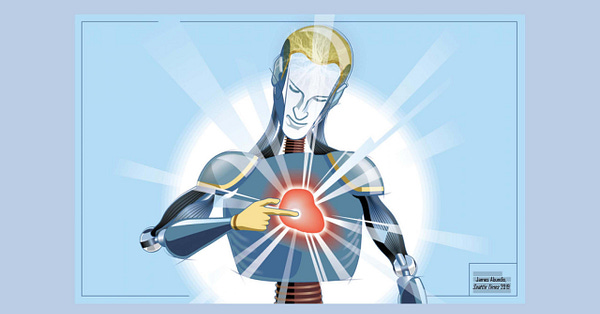The Expanse: last (?) TV show season and last novel
Plus: religious transhumanism and its critics, events.
Greetings to all readers and subscribers, and special greetings to the paid subscribers!
Please scroll down for the main topic of this newsletter. But first:
“Public theologian” Ted Peters is writing a series on H+ (1, 2, 3). “Should we Christians, Jews, and Muslims board the transhumanist train?… Is a religious transhumanism conceivable?”
Among other players, Peters mentions the Christian Transhumanist Association, the Mormon Transhumanist Association, and Turing Church. According to Peters, I’m a secular transhumanist who “feigns secularism yet appeals to religious sensibilities,” or “a wolf in sheep’s clothing.”
Peters doesn’t sound too unfriendly overall. However, he says, we must “keep in mind the distinction between penultimate futurum and ultimate adventus” (respectively, human progress and salvation in God’s future).
But to me, those are too similar to be sharply distinguished. I prefer to call myself a believer rather than an agnostic, but I’m close to the spiritual naturalism of Eric Steinhart, which is inspired by none other than Richard Dawkins and can be interpreted as an agnostic or even an atheist position. I don’t interpret it this way because I don’t make that sharp distinction. So yes, perhaps I’m a wolf in sheep’s clothing indeed.
Peters is co-editing a new book, Religious Transhumanism and its Critics, to be published in a couple of months. I look forward to reading the book, which will include essays by many friends.
On February 2 I’ll give a talk on the spiritual aspects of spaceflight at the first event, or “inaugural digital experience,” organized by Black Sky, a new collective “on a mission to minimize dystopia and maximize harmony with the cosmos.” Please come and listen!
My talk will be similar to the talk that I’ll give on February 9 at the webinar on “Spirituality and the Moon” organized by the Moon Village Association. Following my book “Futurist spaceflight meditations,” I’ll argue that we need a new spirituality centered on our astounding, amazing universe, and our futures among the stars.

I have been watching the sixth and last season of “The Expanse” TV show. I have also been reading the ninth and last book of the novel series.
The decision to end the TV show after six seasons based on the first six novels makes some sort of sense, because the last three novels are set 30 years later in the future.
But the first minutes of each episode of Season 6 follow a parallel story, unrelated to the main story and based on the novella “Strange Dogs,” which is set before the last three novels but after the first six.
The last three novels are centered on Laconia, Winston Duarte’s plans for the future of humanity, the almost God-like protomolecule Engineers, and the even stranger mysterious beings that killed them in the remote past. In the eighth novel, we learn that the events in “Strange Dogs” stimulated Duarte:
“The high consul’s interest in personal immortality came from them… It was the answer to his biggest problem. How do you hold a galaxy-spanning empire together over generations? Have someone running it who doesn’t die.”
It seems to me that the inclusion of the events in “Strange Dogs” can only be meant to leave open the possibility of future seasons of the show based on the last three novels.
That would be great! “The Expanse” is science fiction at its best, able to provoke a cosmic sense of wonder and great expectations for our future in the solar system and out there among the stars. I reviewed “The Expanse” in my book “Futurist spaceflight meditations” (Chapter 7 and Chapter 9).
In the last novel, my favorite character Detective Miller is back! Previously, Miller’s mind was uploaded by the protomolecule to an exotic substrate, perhaps based on weird quantum shenanigans, and beamed to the mind of Jim Holden now and then. In the last novel, Miller is back one last time and helps bring the saga to closure.






